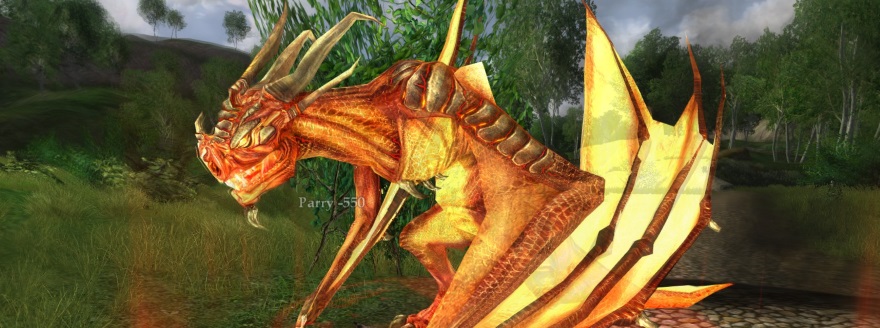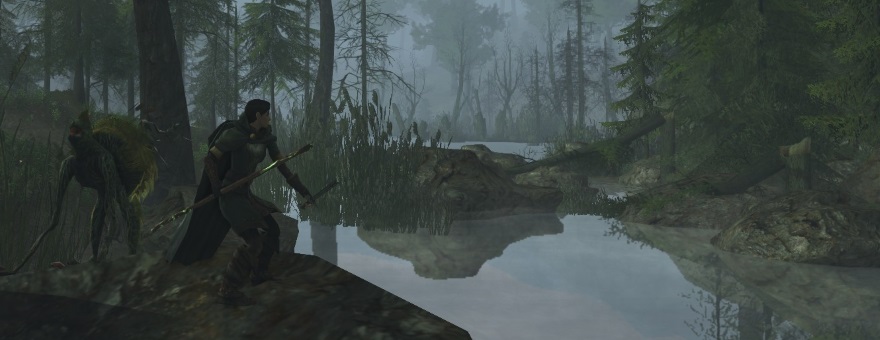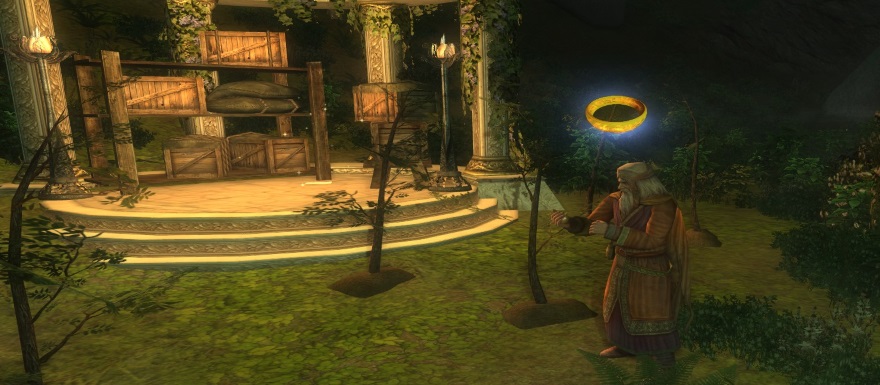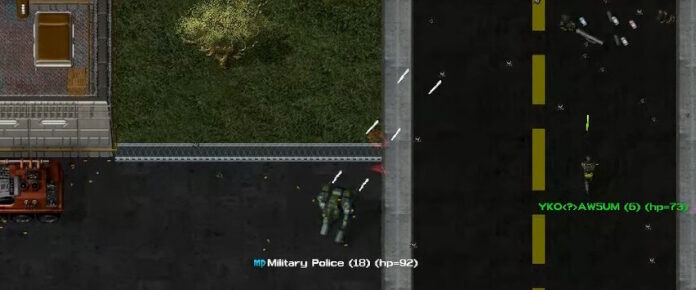
One thing I cannot deny is that LOTRO is what most people would consider to be an “older MMO.” It’s been in live operation ever since April 2007, and once the game tipped over the decade mark, it joined other long-running titles that had long since shed their youth for maturity and stability.
As I was exploring Northern Mirkwood and going through the new Christmas quest recently, I found my thoughts had turned to evaluating the game’s status as an aging MMORPG. I mean, all MMOs age (if they’re fortunate enough to launch), and not every title can remain young, hot, and popular forever. But that doesn’t mean that they become irrelevant and unengaging when they’ve entered into the middle age of their lifespan. So, I thought, how is LOTRO aging as an 11-year-old product? What is going for it at this point and what is starting to show signs of wear and tear?

Stacking up to metrics
When many people try to ascertain the health of a live MMO, more often than not the first stop is to concrete metrics and numbers. How many people are playing? How much money is the game making? What have its trends looked like over the past few years?
It’s here that we have to face the fact that a lot of the answers to these will go unknown for anyone outside of Standing Stone Games. The studio doesn’t release numbers and probably has no good reason to anyway. It’s safe to assume that LOTRO makes enough to pay the bills and fund some development but that the MMO isn’t growing or enjoying anywhere near the height of popularity it once had.
Comparing Reddit subscriptions, LOTRO’s respectable-but-not-great 14,700 subs put it firmly alongside mid-range MMOs such as Trove (17K), Star Trek Online (18.8K), Neverwinter (23.9K), and ArcheAge (18K). It’s just one number from a certain source, but it’s something. That’s probably where a lot of people mentally stack LOTRO these days as a proven MMO that has a committed crowd of followers but isn’t blowing up the charts.
There are still some active LOTRO blogs and bloggers out there, and the MMO is spoken about with fondness among some lifelong players, but again, it’s not what it used to be. In terms of popularity and finance, LOTRO is hanging in there but not generating a lot of movement.

Life, uninterrupted
But for me, that all doesn’t really touch upon the question today. Most MMOs have a long tail of popularity and revenue, so I’m kind of just pointing out the obvious. But if we were to remove from the table any issue of player population, money generated, or internet fame, where would LOTRO stand? How is it aging over the years?
One of the best things that speaks in favor of this MMO is that the world of Middle-earth has grown so much since launch and yet it still has a consistency and a realness to it. It’s not a weird mishmash of thematic zones that don’t relate to each other. Instead, its areas flow into each other very naturally, held in place by the well-established lore and canon of the books. From 2007 to 2018, LOTRO has done wonders to expand its borders without sacrificing landscape integrity or making earlier areas irrelevant and archaic.
Graphics are another consideration for the aging question, and here we are on more precarious ground for this game. In many ways, LOTRO is still a really good-looking game. It used to be one of the most frequently screenshotted MMOs among players, although that time seems to be slipping into the past. It’s not quite as gorgeous in comparison to modern games and MMOs, but there is a beauty and an attention to detail that goes a long way to taking this from a “game” world to a virtual one. Even when the areas and locations get ugly, there’s this realness about them that draws me in and makes me feel like it actually has a history and a connection to the people around it.
I’m glad that SSG made some effort to update the character avatars, although in the end, this wasn’t nearly as sweeping or revolutionary an event as I think a lot were hoping. It was a minor cosmetic facelift, welcome but not as transformative as some desired. Without stylized graphics (LOTRO has always skewed more realistic but not photographically so), this MMO is going to need an increasing amount of help to keep its visuals from becoming too long in the tooth. And I’m worried that SSG does not have nearly the resources nor the desire to see that through.

Building on the foundation
Another indicator of aging well or poorly is to look at the content rollout of an MMO. Is the content frequent, useful, and exciting? LOTRO isn’t seeing the fastest content rollout of the industry these days, clocking in three or four really meaty updates a year. It’s enough, I would say. I appreciate that a lot of the updates have built upon the long-established foundation and pattern set for this game to offer “more of the same” to a community that craves it.
So we get more zones, more quests, more epic story, more lore characters, more iconic locations, and more deeds, titles, pets, mounts, and other chasables. As I’ve said before, I strongly feel that Mordor was a major misstep and a missed opportunity for the game, but I will also give credit where it is due and praise SSG for a good start to the recovery with Northern Mirkwood. It’s helped to remind players of how large and diverse this world is and how much more there is to see of it. High level zones shouldn’t all be ugly and hostile — that’s a pretty poor reward for making it up here. Instead, we’re still getting beautiful and striking scenery and places that beg to be explored.
The studio is definitely struggling to figure out how to best monetize the game in the post-Turbine period. Lockboxes were an ugly blemish upon the latest expansion and don’t seem to be going away any time soon. LOTRO’s business model, once praised for its seeming generosity, certainly has aged very poorly with modern players coming in and wondering why so much content is locked while other MMOs give everything but the latest expansion for free these days.
I’m pleased to see that SSG is experimenting with more festival content and roleplaying tools, as a great portion of the community revels in the non-combat aspect of the game. Housing still needs a top-to-bottom overhaul (and probably will never get it), but at least we’re seeing things like new instruments, more flexible housing decor arrangement, cosmetic weapons, and vanity pets. It’s a pretty full-featured game when you step back and look at it all, and my charge to the studio would be to never stop evaluating what features really do need elimination, updating, or streamlining as the game continues (legendary items, anyone?).
“Good not great” is how I’d sum up Lord of the Rings Online’s aging. It’s certainly enough to keep the game going for a good long while, barring any unforeseen issues with the IP or revenue. But the end result of how well it ages is up to the studio’s determination whether to coast on proven aspects or to keep challenging itself to do the best with what resources it currently holds.
 Every two weeks, the LOTRO Legendarium goes on an adventure (horrid things, those) through the wondrous, terrifying, inspiring, and, well, legendary online world of Middle-earth. Justin has been playing LOTRO since its launch in 2007! If you have a topic for the column, send it to him at justin@massivelyop.com.
Every two weeks, the LOTRO Legendarium goes on an adventure (horrid things, those) through the wondrous, terrifying, inspiring, and, well, legendary online world of Middle-earth. Justin has been playing LOTRO since its launch in 2007! If you have a topic for the column, send it to him at justin@massivelyop.com.














